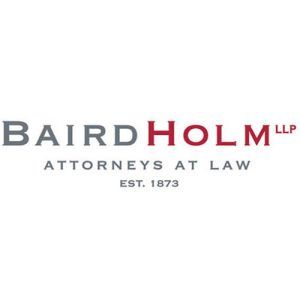Generally, a corporation is viewed as a complete and separate entity from its shareholders, who are not liable for the debts and obligations of the corporation.1 A court will disregard the corporate identity and “pierce the corporate veil” only when the corporation has been used to commit fraud, violate a legal duty, or perpetrate a dishonest or unjust act in contravention of the rights of another.
The Nebraska Uniform Limited Liability Company Act states a similar general rule that the limited liability company (LLC) is an entity distinct from its members.2 Individual members of an LLC are generally not liable for a debt, obligation, or liability of the company. The company’s identity as a separate legal entity will be preserved until sufficient reason to the contrary appears. The LLC liability shield may only be overcome by a creditor under the equitable theory of piercing the corporate veil.3
1. Background of Claims
Companies may manage operational risk by creating corporate subsidiaries to conduct specific items of business. Doing so can limit the parent company’s liability and exposure to the value of its capital contribution into the subsidiary.4 When a plaintiff asserts a claim against a corporate subsidiary, they may seek to disregard the corporate form and hold the parent company responsible for the subsidiary’s actions or obligations and attempt to pierce the corporate veil. Determining whether to pierce the corporate veil thus requires courts to look at the structural relationship between the parent and subsidiary.
- Alter Ego Theory of Liability
A plaintiff may attempt to bring a veil piercing claim under the alter ego theory of liability. To succeed on this theory, a plaintiff would generally need to prove (1) the parent company dominated and controlled the subsidiary to the point of disregarding the subsidiary’s separate identity and (2) it would be wrong or unjust if the court refused to pierce the corporate veil. Courts consider many factors when determining whether the parent ignored the subsidiary’s separate identity and operated the two companies as one entity, with no single factor being determinative, including whether:- The subsidiary’s corporate formalities were disregarded;
- the parent owns all the subsidiary’s stock;
- the subsidiary is inadequately capitalized;
- the parent and subsidiary share corporate officers and directors;
- the subsidiary shares offices, employees, bank accounts, and telephone numbers with the parent;
- the parent uses the subsidiary’s property as its own;
- the agreements between the parent and subsidiary are not arm’s length transactions;
- the subsidiary makes undocumented loans to the parent or extends credit to the parent on other than market terms; or
- the subsidiary guarantees debts of the parent or any of the parent’s other subsidiaries.
Oftentimes, proof of comingled identities is not enough for courts to pierce the corporate veil. For a plaintiff to succeed on the alter ego theory, courts may require an additional element of proof of injustice absent ignoring the corporate form. Courts are not always clear regarding what constitutes injustice, but in some states fraud is required. Others simply require a showing of overall unfairness.
- Agency Theory
A plaintiff may also assert a veil piercing claim relying on the agency theory. Under this theory, the parent’s liability for the subsidiary’s actions is based on the notion that a principal is liable for the actions taken by its agents within the scope of the agent’s authority. Typically, a plaintiff must establish that the parent (1) authorized the subsidiary to act on its behalf and the subsidiary agreed to act as the parent’s agent; and (2) exercised total control over the subsidiary.A subsidiary’s authority to act on behalf of the parent could be either actual or apparent authority. Accordingly, under this theory, if a parent’s conduct gives a third party the impression that a subsidiary has an authority to act, and the third party relies on this impression, the parent is deemed to have authorized the subsidiary to act. Relatedly, when determining whether a parent had total control over the subsidiary, a court may consider whether the subsidiary agreed to be bound by resolutions of the parent, whether the parent company had control over the subsidiary’s professional practices, or whether the parent company had control over the subsidiary’s client engagements and decision-making.
2. Application by Nebraska Courts
Nebraska courts, consistent with courts around the country, view a corporation as a legal entity separate from its shareholders unless the legal entity is used for improper purposes.5 A plaintiff seeking to pierce the corporate veil in Nebraska must allege and prove the corporation was under the actual control of the shareholder and that the shareholder exercised such control to commit wrongdoing in contravention of the plaintiff’s rights.6 Nebraska courts use a fact-intensive analysis when analyzing corporate veil piercing claims for corporations and limited liability companies, including in the case of a parent-subsidiary relationship.
Courts are hesitant to pierce the corporate veil simply because a parent and subsidiary share assets or services. In Global Credit Services v. AMISUB, the Nebraska Supreme Court clarified the doctrine of separate corporate existence does not break down simply because a subsidiary is wholly owned by its parent; nor is ownership of all the stock by one person a sufficient basis to disregard corporate form. For the plaintiff to succeed on its claim, according to the court, it must show that the parent dominated the subsidiary such that the subsidiary had no separate existence and functioned solely to achieve purposes of its parent entity.7
Nebraska courts use similar methods when deciding veil piercing claims in the LLC context. Like a corporation, the corporate veil of an LLC can be pierced to prevent fraud or injustice.8 In E&A Consulting Group Inc. v. World Baseball Village Management LLC, the plaintiff sought to pierce the subsidiary’s corporate veil to recover from its member. The court described four factors to weigh when determining whether to pierce the corporate veil:
- Inadequate Capitalization (or very small in relation to the nature of the business of the entity). The capitalization is measured at the time of incorporation, and undercapitalization presents a question of fact that turns on the nature of the business.
- Insolvency. Whether a corporation was insolvent at the time the debt was incurred.
- Diversion of Funds for Improper Uses. When a principal shareholder appropriates and uses corporate funds and property for personal purposes and thereby defrauds and causes damages to creditors, the shareholder can be held individually liable for corporate debt.
- Subsidiary Is a Facade or Shell. Whether the corporation is a facade for the personal dealings of the shareholder and operations of the corporation are carried on by the shareholder in disregard of the corporate entity. The separate entity concept may be disregarded where the corporation is a mere shell, serving no legitimate business purpose, and is used as an intermediary to perpetuate fraud on the creditors.
Notably, this exact four-factor test has not yet been applied to a Nebraska LLC in any reported Nebraska appellate decision,9 though the four-factor test has been used in two unreported decisions.10 Although these factors are not new to Nebraska case law, they are relatively new to the LLC veil piercing context. Accordingly, it is unclear whether Nebraska courts will continue to use these four specific factors.
3. Key Takeaways
In sum, Nebraska courts will address veil-piercing claims on a case-by-case basis. Corporate entities should maintain clear boundaries between parent and subsidiary entities to avoid potential liability resulting from veil piercing claims. Best practices to avoid liability include:
- Properly capitalizing and insuring the subsidiary;
- creating a separate and independent bank account for the subsidiary;
- maintaining separate books and records for the subsidiary; and
- ensuring all financial transactions with the subsidiary are on an arm’s length basis, including any loan to or from the parent.
With these suggestions in mind, practitioners can assist their clients in setting up and maintaining parent-subsidiary structures in a manner that will better withstand a piercing the corporate veil claim.


Hannah Fischer Frey is a partner and Katie L. Kalkowski is an associate at Baird Holm LLP. Fischer Frey focuses her law practice in the areas of federal and state income tax law and business succession planning. Kalkowski’s practice focuses on corporate transactions and general corporate matters, including entity formation, corporate governance, strategic transactions, and regulatory compliance. For more information, contact Fischer Frey or Kalkowski at hfrey@bairdholm.com or kkalkowski@bairdholm.com, respectively.
Endnotes
- See Christian v. Smith, 759 N.W.2d 447 (Neb. 2008).
- Neb. Rev. Stat. section 21-104(a).
- See Christian, 759 N.W.2d at 447.
- See Philip D. Robben & Kelley Drye, Piercing the Corporate Veil, PRACTICAL LAW CORPORATE & SECURITIES (last visited April 11, 2023).
- Global Credit Servs., Inc. v. AMISUB, 508 N.W.2d 836 (Neb. 1993); Hayes v. Sanitary & Improvement Dist. No. 194, 244 N.W.2d 505, 511 (Neb. 1976).
- See Global Credit Servs., 508 N.W.2d at 842.
- See Global Credit Servs., 508 N.W.2d at 843.
- See E & A Consulting Group, Inc. v. World Baseball Village Management, LLC, 2013 WL 4437312 (Ct. App. Neb. 2013) (declining to pierce the corporate veil on a technical finding that WB Holdings was not yet a member of WB Management at the time of the conflict).
- See Christopher W. Peterson, Piercing the Corporate Veil in Nebraska, 51 CREIGHTON L. REV. 247, 274 (2018).
- See E & A Consulting Group, Inc. v. World Baseball Village Management, LLC, 2013 WL 4437312 (Ct. App. Neb. 2013); TFF, Inc. v. St. Ellen 100 LLC, 2014 WL 3421485 (Ct. App. Neb. 2014).









